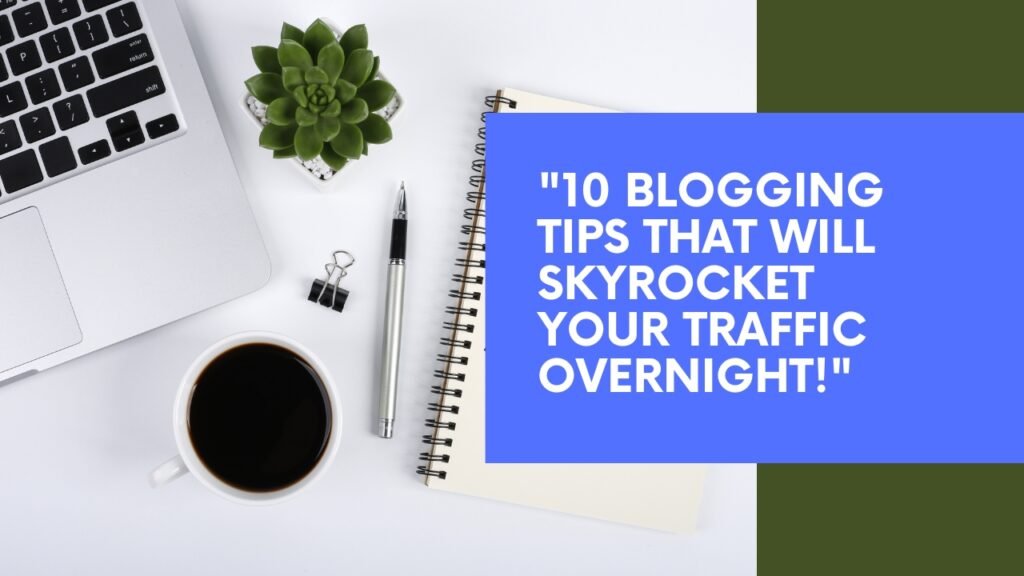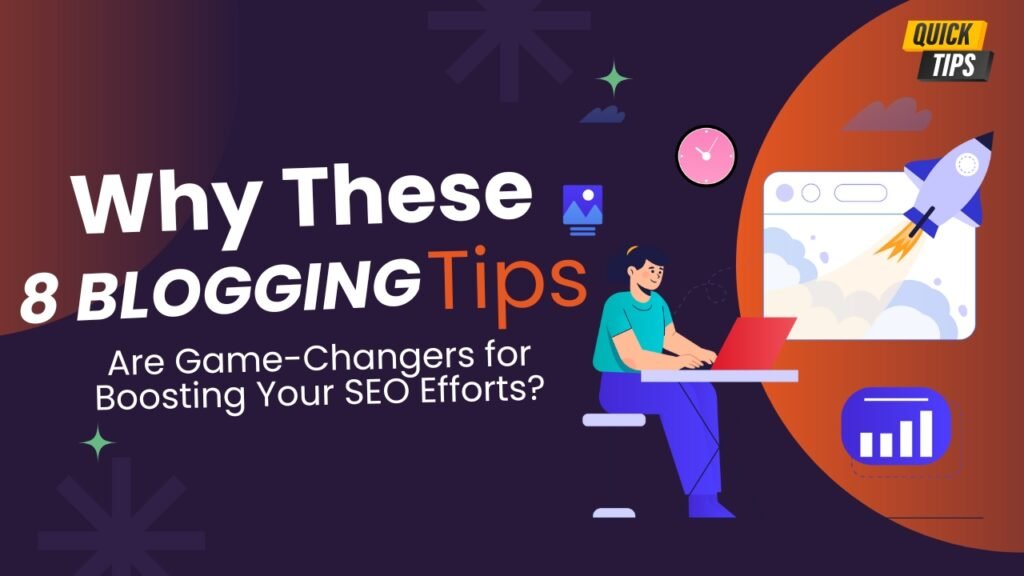When it comes to blogging, driving traffic to your website is paramount. With the right strategies, you can see a significant increase in visitors. This article will explore ten actionable tips that will skyrocket your traffic overnight. From mastering SEO techniques to engaging with your audience, these strategies are designed to enhance your blog’s visibility and attract more readers.
Crafting Irresistible Headlines
Creating captivating headlines is one of the most effective ways to grab your audience’s attention. Headlines serve as the first impression of your blog post, and a well-crafted headline can significantly increase your click-through rate. To create irresistible headlines, follow these tips:
- Use Numbers and Lists: Headlines with numbers (e.g., “10 Tips” or “5 Strategies”) tend to perform better as they promise concise and digestible content.
- Incorporate Power Words: Words like “ultimate,” “essential,” “proven,” and “skyrocket” evoke emotions and curiosity, encouraging readers to click.
- Ask Questions: Engaging questions can pique curiosity and prompt readers to find out the answer by reading your post.
- Keep It Short and Sweet: Aim for headlines that are concise yet descriptive. Ideally, your headline should be under 70 characters to ensure it displays fully in search engine results.
- A/B Test Your Headlines: Test different headlines to see which one resonates best with your audience. Tools like CoSchedule’s Headline Analyzer can help you refine your headline for maximum impact.
By following these tips, you can create headlines that not only attract readers but also improve your blog’s SEO performance.
Implementing SEO Best Practices
Search engine optimization (SEO) is crucial for increasing your blog’s visibility on search engines. Implementing SEO best practices can help your blog rank higher in search results, driving more organic traffic to your site. Here are some essential SEO tips:
- Conduct Keyword Research: Use tools like Google Keyword Planner or Ahrefs to identify relevant keywords with high search volume and low competition. Incorporate these keywords naturally into your content.
- Optimize Your Content: Ensure your content is well-structured with headings, subheadings, and bullet points. Use your target keywords in the title, meta description, URL, and throughout the body of the text.
- Create Quality Backlinks: Reach out to other bloggers and websites in your niche to secure backlinks to your content. High-quality backlinks from authoritative sites can significantly boost your search engine rankings.
- Improve Your Site’s UX: A user-friendly website with fast load times, easy navigation, and a responsive design can enhance the user experience (UX), which is a critical factor for SEO.
- Use Alt Text for Images: Always add descriptive alt text to your images. This helps search engines understand the content of your images, improving your chances of appearing in image search results.
By implementing these SEO best practices, you can enhance your blog’s visibility, attract more organic traffic, and improve your overall search engine rankings.
Must Read: 10 WP Plugins You Can’t Live Without – Ultimate Review!
Leveraging Social Media Platforms
Social media platforms are powerful tools for driving traffic to your blog. By effectively leveraging these platforms, you can reach a wider audience and encourage more people to visit your site. Here are some strategies for using social media to boost your blog traffic:
- Share Your Content Regularly: Post your blog content on all your social media channels regularly. Use engaging captions and eye-catching images to attract attention.
- Engage with Your Followers: Respond to comments, join discussions, and engage with your followers to build a loyal community around your blog.
- Utilize Hashtags: Use relevant hashtags to increase the visibility of your posts. Hashtags can help your content reach a broader audience who are interested in similar topics.
- Collaborate with Influencers: Partner with influencers in your niche to promote your content. Influencers can help you reach a larger and more targeted audience.
- Run Social Media Ads: Invest in social media advertising to boost your reach. Platforms like Facebook, Instagram, and Twitter offer targeted advertising options that can help you reach your ideal audience.
By effectively leveraging social media platforms, you can drive more traffic to your blog and increase your online presence.
Utilizing Long-Tail Keywords
Long-tail keywords are specific, less competitive phrases that can help you attract targeted traffic to your blog. By incorporating long-tail keywords into your content, you can improve your chances of ranking higher in search engine results. Here’s how to use long-tail keywords effectively:
- Conduct In-Depth Keyword Research: Use tools like SEMrush, Ahrefs, or Ubersuggest to find long-tail keywords that are relevant to your niche.
- Create Content Around Long-Tail Keywords: Develop blog posts that focus on specific long-tail keywords. This will help you attract visitors who are searching for those particular phrases.
- Use Long-Tail Keywords in Your Headlines: Incorporate long-tail keywords into your blog post headlines to improve your search engine rankings.
- Optimize Your Meta Descriptions: Include long-tail keywords in your meta descriptions to enhance your visibility in search results.
- Monitor and Adjust: Regularly monitor the performance of your long-tail keywords and adjust your strategy as needed to ensure optimal results.
By utilizing long-tail keywords, you can attract more targeted traffic to your blog and improve your search engine rankings.
Creating High-Quality Content
High-quality content is the backbone of any successful blog. By consistently producing valuable and engaging content, you can attract and retain a loyal audience. Here are some tips for creating high-quality content:
- Understand Your Audience: Know your audience’s needs, preferences, and pain points. Create content that addresses their specific interests and concerns.
- Provide Value: Offer actionable insights, tips, and information that your readers can benefit from. Make sure your content is informative, well-researched, and up-to-date.
- Use a Conversational Tone: Write in a friendly and conversational tone to make your content more relatable and engaging.
- Incorporate Visuals: Use images, infographics, videos, and other visuals to make your content more appealing and easier to digest.
- Edit and Proofread: Ensure your content is free from grammatical errors and typos. Well-edited content reflects professionalism and enhances readability.
By focusing on creating high-quality content, you can attract more readers, keep them engaged, and encourage them to return to your blog.
Building an Email List
Building an email list is a powerful way to drive traffic to your blog and maintain a connection with your audience. Here are some strategies for building and leveraging an email list:
- Offer Incentives: Provide valuable incentives, such as free eBooks, exclusive content, or discounts, to encourage visitors to subscribe to your email list.
- Use Opt-In Forms: Place opt-in forms strategically on your blog, such as in the sidebar, at the end of posts, or as pop-ups, to capture email addresses.
- Send Regular Newsletters: Keep your subscribers engaged by sending regular newsletters with updates, new blog posts, and exclusive content.
- Segment Your List: Segment your email list based on your subscribers’ interests and behaviors to send more targeted and relevant content.
- Personalize Your Emails: Personalize your emails by addressing your subscribers by name and tailoring the content to their preferences.
By building and maintaining an email list, you can drive more traffic to your blog and create a loyal community of readers.
Engaging with Your Audience
Engaging with your audience is crucial for building a loyal readership and encouraging repeat visits to your blog. Here are some ways to engage with your audience effectively:
- Respond to Comments: Take the time to respond to comments on your blog posts. Engaging with your readers’ comments shows that you value their input and fosters a sense of community.
- Encourage Discussions: Ask questions at the end of your blog posts to encourage readers to share their thoughts and opinions. This can lead to meaningful discussions and increased engagement.
- Host Live Q&A Sessions: Host live Q&A sessions on social media or your blog to interact with your audience in real-time and address their questions and concerns.
- Create Interactive Content: Develop interactive content such as polls, quizzes, and surveys to engage your readers and make your blog more dynamic.
- Share User-Generated Content: Encourage your audience to create content related to your blog and share it on your platform. User-generated content can increase engagement and build a sense of community.
By actively engaging with your audience, you can create a more interactive and loyal readership.
Guest Posting on Popular Blogs
Guest posting on popular blogs in your niche is an excellent way to reach a larger audience and drive traffic back to your blog. Here are some tips for successful guest posting:
- Identify Relevant Blogs: Look for popular blogs in your niche that accept guest posts. Ensure that these blogs have a substantial following and align with your target audience.
- Pitch Compelling Ideas: Craft a compelling pitch that outlines your proposed guest post topic and how it will benefit the host blog’s audience.
- Write High-Quality Content: When writing a guest post, ensure that the content is high-quality, informative, and relevant to the host blog’s readers.
- Include a Bio and Backlink: Include a brief bio with a link back to your blog in your guest post. This can drive traffic to your blog and improve your SEO.
- Promote Your Guest Post: Share your guest post on your social media channels and email list to maximize its reach and drive more traffic to your blog.
By guest posting on popular blogs, you can expand your reach, attract new readers, and increase your blog traffic.
Optimizing Your Site Speed
Site speed is a critical factor for both user experience and SEO. A slow-loading site can drive visitors away and negatively impact your search engine rankings. Here are some tips for optimizing your site speed:
- Optimize Images: Compress and resize your images to reduce their file size without compromising quality.
- Use a Content Delivery Network (CDN): A CDN can distribute your site’s content across multiple servers, reducing load times for visitors around the world.
- Minimize HTTP Requests: Reduce the number of HTTP requests by combining files, using CSS templates, and minimizing the use of external scripts.
- Enable Browser Caching: Configure your server to store static resources in the visitor’s browser cache, reducing load times for repeat visitors.
- Choose a Fast Hosting Provider: Select a reliable hosting provider with fast servers and good uptime to ensure your site loads quickly.
By optimizing your site speed, you can enhance the user experience, improve your SEO, and drive more traffic to your blog.
Analyzing and Adapting Your Strategy
Regularly analyzing and adapting your blogging strategy is crucial for sustained traffic growth. Here are some steps to ensure you stay on track:
- Monitor Your Analytics: Use tools like Google Analytics to track your traffic, bounce rates, and user behavior. Analyze this data to identify what’s working and what needs improvement.
- Set Goals and KPIs: Define clear goals and key performance indicators (KPIs) to measure your success and track your progress.
- Conduct A/B Testing: Test different strategies, headlines, content formats, and calls-to-action to see what resonates best with your audience.
- Gather Feedback: Ask your audience for feedback on your content and user experience. Use this feedback to make informed improvements.
- Stay Updated with Trends: Stay informed about the latest blogging and SEO trends to ensure your strategies remain effective and relevant.
By continuously analyzing and adapting your strategy, you can stay ahead of the competition and ensure sustained traffic growth for your blog.
Also Read: Blogging Tips That Will Make Your Content Stand Out from the Crowd
FAQs
What are some effective ways to increase blog traffic?
Effective ways to increase blog traffic include crafting irresistible headlines, implementing SEO best practices, leveraging social media platforms, utilizing long-tail keywords, creating high-quality content, building an email list, engaging with your audience, guest posting on popular blogs, optimizing your site speed, and regularly analyzing and adapting your strategy.
How can I optimize my blog for SEO?
To optimize your blog for SEO, conduct keyword research, optimize your content structure, create quality backlinks, improve your site’s user experience, and use descriptive alt text for images.
Why are long-tail keywords important for blog traffic?
Long-tail keywords are important because they are specific and less competitive, helping you attract targeted traffic and improve your search engine rankings.
What role does social media play in driving blog traffic?
Social media helps you reach a wider audience, engage with your followers, and drive traffic to your blog through regular content sharing, engagement, hashtag use, influencer collaborations, and social media ads.
How can guest posting help my blog?
Guest posting on popular blogs allows you to reach a larger audience, attract new readers, build backlinks, and improve your SEO, ultimately driving more traffic to your blog.



